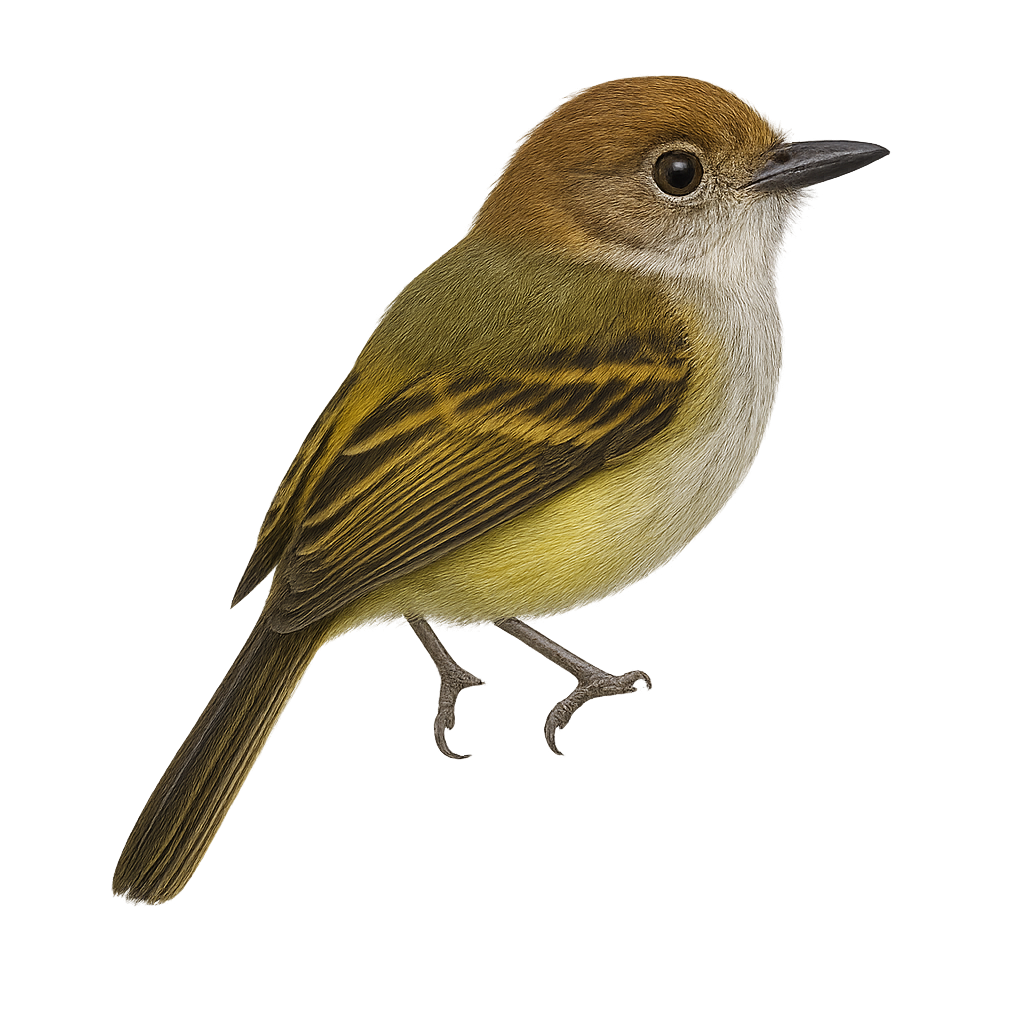Your wildlife photography guide.
Explore the rusty-fronted tody-flycatcher in detail, study its behavior, prepare your shots.
Where to observe and photograph the rusty-fronted tody-flycatcher in the wild
Learn where and when to spot the rusty-fronted tody-flycatcher in the wild, how to identify the species based on distinctive features, and what natural environments it inhabits. The WildlifePhotographer app offers tailored photography tips that reflect the rusty-fronted tody-flycatcher’s behavior, helping you capture better wildlife images. Explore the full species profile for key information including description, habitat, active periods, and approach techniques.
Rusty-fronted Tody-Flycatcher
Scientific name: Poecilotriccus latirostris

IUCN Status: Least Concern
Family: TYRANNIDAE
Group: Birds
Sensitivity to human approach: Suspicious
Minimum approach distance: 10 m
Courtship display: November to December
Incubation: 15-17 jours
Hatchings: November to January
Habitat:
tropical forests, forest edges, shrublands
Activity period :
Primarily active during the day, with peak activity in the morning and late afternoon.
Identification and description:
The Rusty-fronted Tody-Flycatcher (Poecilotriccus latirostris) is a small bird from the Tyrannidae family, commonly found in the tropical forests of South America. It is recognized by its colorful plumage, featuring a rusty head and bright yellow belly. Its relatively broad bill gives it its name. This bird is often seen catching insects mid-air or foraging through foliage. Although discreet, its melodious song often reveals its presence. It prefers dense habitats where it can easily hide. Its adaptability to various environments makes it a relatively common species within its range.
Recommended lens:
400 mm – adjust based on distance, desired framing (portrait or habitat), and approach conditions.
Photography tips:
To photograph the Rusty-fronted Tody-Flycatcher, it is advisable to use a 400mm lens or longer to capture detailed images without disturbing the bird. Look for it in tropical forests or forest edges, where it is often active during the day. Be patient and listen for its distinctive song to locate its position. A discreet approach is essential, as this bird is suspicious. Early morning hours are best for soft lighting and increased activity.
The WildlifePhotographer App is coming soon!
Be the first to explore the best nature spots, track rutting seasons, log your observations, and observe more wildlife.
Already 1 432 wildlife lovers subscribed worldwide

